How to Build a Sales ICP (Ideal Customer Profile) For Your Business?
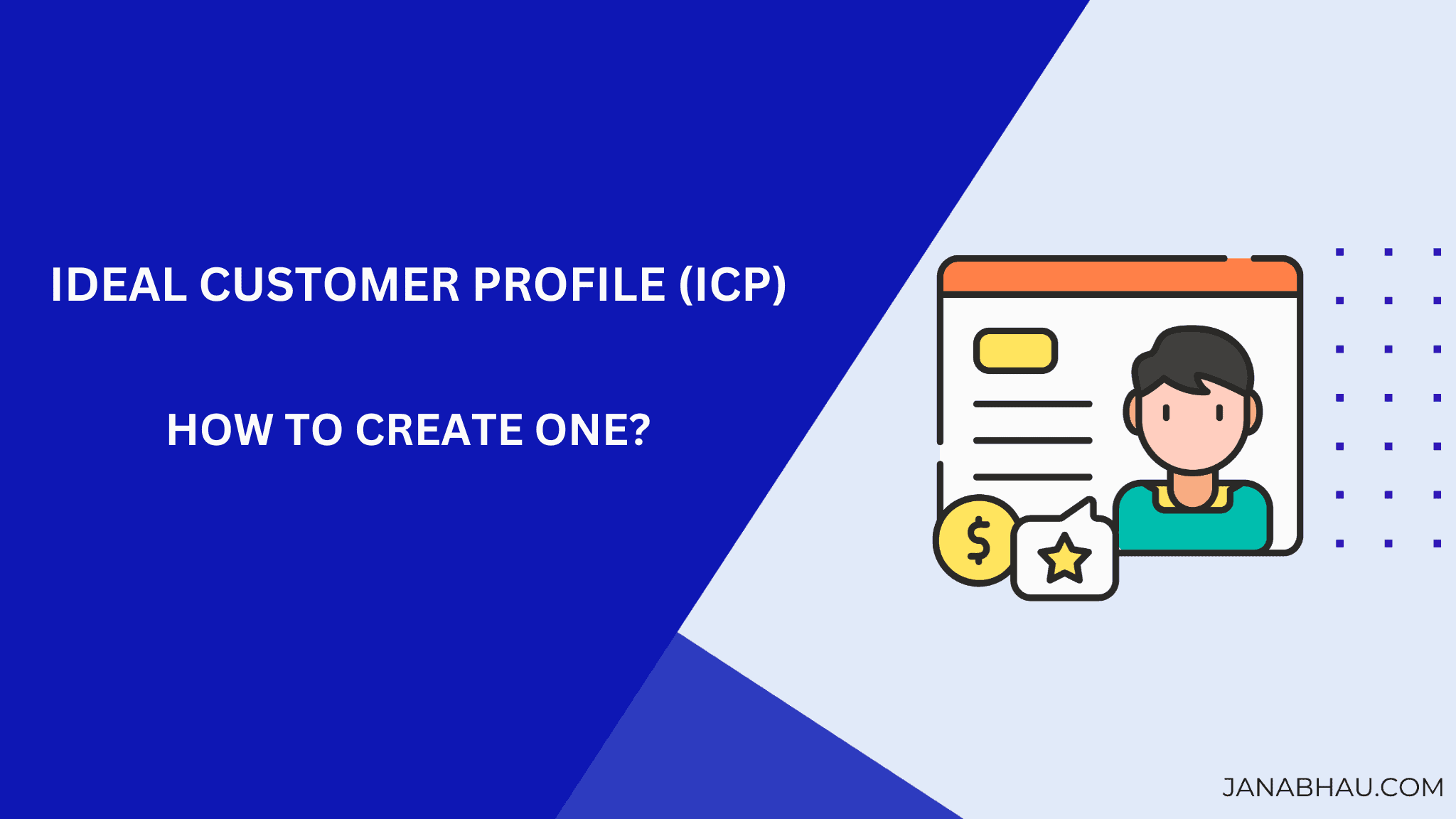
Are you struggling to target the right customers, leading to wasted efforts and low conversion rates?
When I started my career in sales, I often chased leads that weren’t the best fit for our products. Why? Because saying no to potential deals is hard. However, if you want to focus your limited resources on what promises the greatest success, you have no other choice.
That is why it’s important to spend the necessary time building a clear Ideal Customer Profile (Sales ICP) to ease the decision-making process on what to focus on, and therefore, direct all company efforts in the most effective way.
In this blog post, I’ll guide you through how to develop your ICP, sharing key steps and insights to help you attract and convert the customers who are most likely to drive growth for your business.
Key Takeaways
- An Ideal Customer Profile (ICP) is a well-defined template, based on specific traits and parameters, that helps businesses identify and target their perfect customers.
- Building a Sales ICP aligns sales and marketing strategies, focusing on high-value accounts to boost conversion rates, customer retention, and overall revenue.
- Businesses need to regularly test and update their ICP to keep up with changing market trends while effectively targeting potential customers.
What is an Ideal Customer Profile (ICP)?

An Ideal Customer Profile (ICP) is a detailed depiction of the perfect customer for your business. It defines the traits, demographics, behavior, and challenges exhibited by an organization that is most likely to purchase from your business. Your product/service can prove to be the ideal solution for this segment of buyers.
From a B2B lens, an ICP is characterized by many common traits including:
- Industry and sector
- Company and team size
- Geography
- Annual revenue
- Technology stack
- Growth stage
For instance, a software company might target mid-sized tech firms earning $10 million to $50 million annually, situated in urban areas, and employing 50 to 200 people. These specifics help sales and marketing teams to develop targeted strategies and allocate resources more effectively.
The significance of an ICP extends beyond just targeting; it also aids in content creation, account-based marketing, and even product development by providing insights into customer needs and preferences.
Focusing on a sales ICP ensures that your sales reps focus most of their time towards attracting and engaging the most valuable customers.
Why should you build an ideal customer profile?
Building a well-defined sales ICP is like having a secret weapon in your business arsenal. By identifying and focusing on ideal customer profiles, sales teams can:
- Improve customer satisfaction, and hence customer retention, by 20%.
- Decrease customer acquisition costs and generate highly qualified leads.
- Enhance account engagement rates by 68%.
- Shorten the sales cycle by 36%.
While these stats look impressive enough to start creating your ICP, it is important to understand how these results can be achieved. The impact of a customer profile depends on how well a business leverages it.
Let’s take a look at how an ideal customer profile complements various stages in your sales process:
- Improve product and plan fitment: Business that fall under a specific ICP have similar challenges. Businesses can design pricing and service plans that align closely with the requirements and budget of their ICP, leading to a better overall customer experience.
- Formulate a highly effective sales strategy: Focusing on leads that fit your ICP ensures that your sales and marketing efforts are directed toward prospects who are more likely to convert, as opposed to targeting the total addressable market. By focusing on the ICP in sales outreach, sales reps save time spent in lead generation and have a better value proposition for ideal customers.
- Gain a competitive advantage: Understanding your ICP helps the sales team position your brand and products more strategically in the market, highlighting your unique value propositions and enhancing your competitive edge.
- Ability to Run Automated Personalized Campaigns: With a well-defined ICP, you can create highly personalized marketing campaigns that resonate with your ideal customers. This leads to more relevant messaging and increased engagement. Multiple ICPs make it easy to segment your customer base and leverage marketing automation tools to delivered tailored resources. Now, marketing teams can focus on addressing the pain points of smaller focus groups, which improves the ROI from marketing collaterals.
Targeted approach, segmenting customers…that does sound a lot like creating a buyer persona. Most businesses and even sales reps tend to get confused between an ideal customer profile and a buyer persona. Some even use the terms interchangeably.
While they both help in similar ways, there are a couple of differences that set them apart.
What’s the difference between an ideal customer profile and a buyer persona?
While an Ideal Customer Profile (ICP) focuses on identifying ideal companies and their business traits, a buyer persona targets individual decision-makers within those companies.
Think of it this way: The ICP helps you understand which companies you should target, while the buyer persona provides insights into the individuals within those companies who make the purchasing decisions.
For example, while your ICP might identify small businesses as your target market, your buyer personas would detail the roles, challenges, and decision-making processes of the individuals within those companies, such as the CTO or Head of IT.
Ideal customer profile vs. Buyer persona
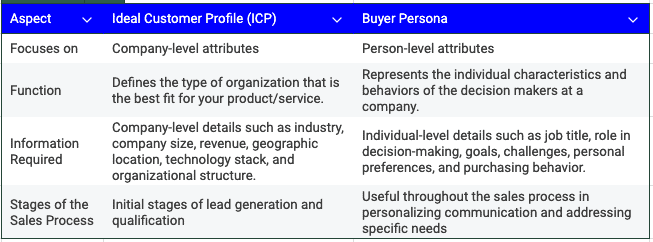
Both ICPs and buyer personas are important for an organization. This distinction ensures that your sales and marketing team efforts are not only targeting the right companies but also speaking directly to the key decision-makers within those organizations.
Now we know that creating an ICP is important, and it can benefit your business as well. It’s important to strategize and implement an ideal customer profile in the right way. And so, I’ve listed out the steps that helped my sales team build our ICP.
How to strategize an ideal customer profile for your business?
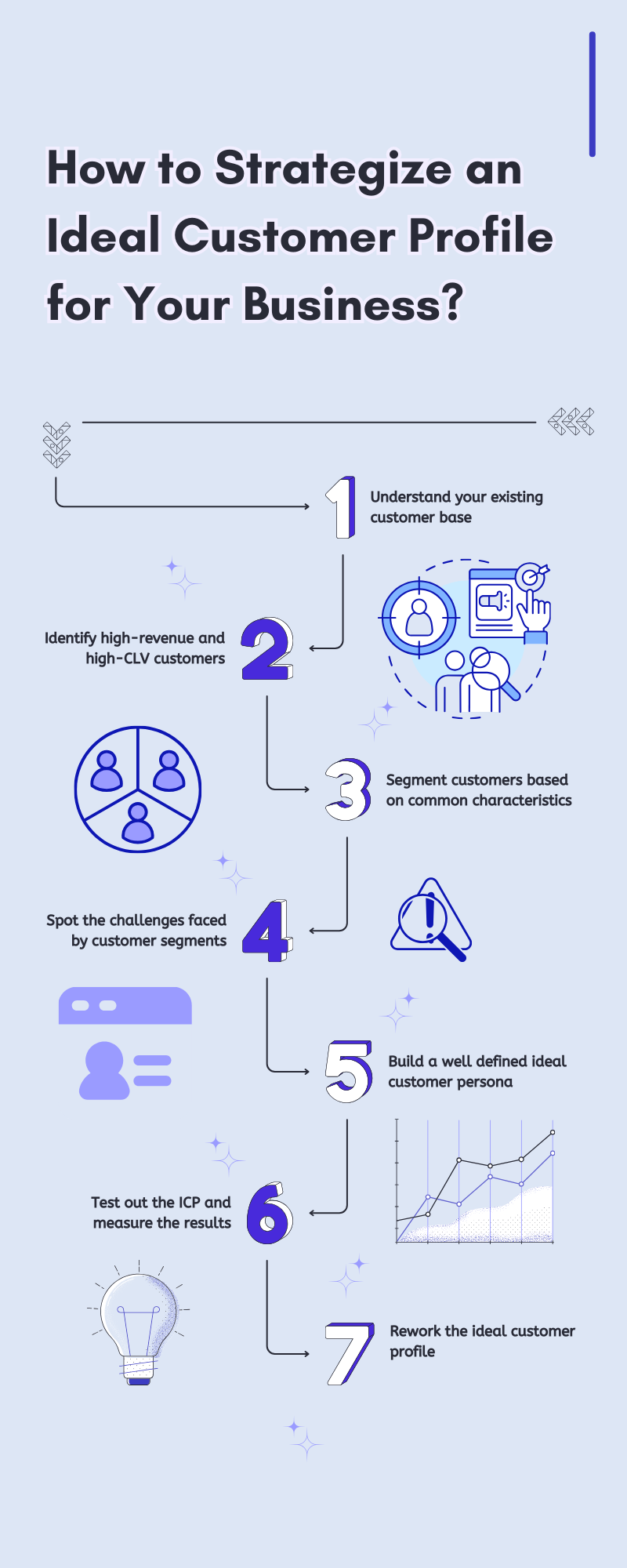
Creating an Ideal Customer Profile (ICP) isn’t just about identifying who you want to sell to; it’s about strategically narrowing your focus from a broad audience to specific high-value accounts. This process involves several key steps that help businesses focus resources on clients that bring the highest value and retention rates:
1. Understanding the existing customer base
The first step in strategizing your Ideal Customer Profile (ICP) is to analyze your existing customer base. This involves delving deep into your current customer data to identify traits that define, and are common among your most successful existing customers.
Review sales records, customer service interactions, and marketing engagement to identify patterns and trends. You must be able to segment all your customer data into specific buckets of demographics, job titles, industries, and behaviors to reveal patterns indicating your ideal customers.
For instance, if you notice that a significant portion of your high-value customers come from a particular industry or share common pain points, this information becomes invaluable in shaping your ICP.
Engaging with customers through surveys and feedback can provide additional insights into their needs and expectations which can can help you tailor your offerings to better meet their needs.
2. Identifying high-revenue and high-CLV customers
The next step is to identify your high-revenue and high-customer lifetime value (CLV) buyers. High-revenue customers typically demonstrate a greater lifetime value, indicating they are more profitable over time.
Metrics such as average contract value, customer lifetime value, and purchase frequency are crucial to pinpoint high-value customers. Often, a small percentage of customers generate the majority of revenue, and these customers and their defining traits further streamline your ICP.
3. Segment customers based on common characteristics
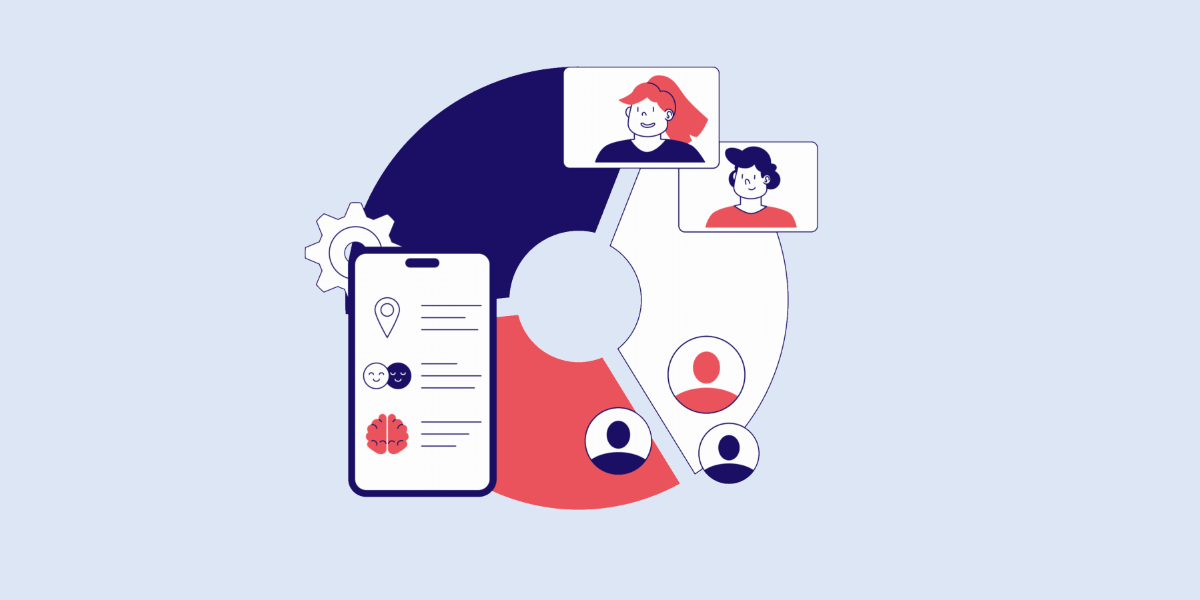
Customer segmentation is a powerful tool that involves grouping customers by shared traits like demographics, industry, and behavior patterns.
Creating segments based on these shared traits helps in crafting targeted messages and strategies that resonate more deeply with each group. For example, you might segment your customers into groups based on their industry, company size, or buying behavior.
Effective segmentation strategies can include:
- Demographic approaches
- Geographic approaches
- Psychographic approaches
- Behavioral approaches
- Needs-based approaches
- Technographic approaches
Segmenting customers enhances marketing by tailoring campaigns to specific preferences and buying behaviors, leading to better engagement and increased sales. Regular analysis of these segments ensures they remain relevant and effective in meeting business goals.
4. Lay down the biggest challenges faced by different customer segments
Each segment may have unique pain points that require targeted solutions, and identifying these challenges enables businesses to develop more effective strategies.
For example, one segment might struggle with legal and contractual restrictions, while another might face revenue limitations that hinder their ability to afford your products or services. Revenue limitations, urgency of needs, and technology adoption rates can all vary between segments, impacting how they engage with your solutions.
Breaking down these challenges and attributing them to specific customer segments helps in crafting sales messaging and solutions for multiple ICPs.
5. Build a well-defined ideal customer persona
Now, it’s time to define them qualitatively and quantitatively. It’s best to be as specific as possible so that sales and marketing teams can leverage them when required.
A few best practices while formulating an ICP include:
- Deploying templates or frameworks to standardize the documentation of each ICP component. This ensures consistency and clarity.
- Create visual representations, such as charts or diagrams, to illustrate the components of your ICP.
- Add real-world scenarios or use cases to each profile to illustrate how your product or service addresses their specific challenges.
Even though your ICP is in place, that doesn’t mean that you won’t face any objections. A strong understanding of challenges and organizational barriers faced by your ICPs can prepare your sales team to navigate the sales process more effectively.
6. Test out the ICP and measure the results
Once you have clearly defined the sales ICP, you must validate and test it. For an internal review, you can share the ICP profiles with key stakeholders, including sales, marketing, and customer service teams. Don’t forget to collect and implement their feedback!
It’s also important to test the profiles with current customers or prospects to ensure that the defined characteristics accurately reflect their attributes and needs.
This phase helps track engagement and conversion metrics to gauge the effectiveness of the ICP. Monitoring patterns during the testing phase can reveal trends in response rates and satisfaction levels related to the defined ICP.
Using tools that track customer feedback and interactions is a great way to check if your assumptions about the ICP are spot on and align with the needs of your top customers.
7. Rework the ideal customer profile
Regularly updating the ICP is essential as market dynamics and customer behaviors evolve over time.
Businesses must ideally review their ICP every 3-6 months to ensure it remains aligned with your target market’s changing needs. Key triggers for revisiting your ICP include launching new products, significant changes in customer behavior, and shifts in the competitive landscape.
Gathering qualitative feedback from customers through interviews or surveys can provide insights into their evolving needs and challenges.
Analyzing sales and marketing data to identify common characteristics of your best customers can also inform potential adjustments to your ICP and help you conduct market research.
Once there is any update in the ICP, it is important to inform everyone in the organization.
The steps listed above are straightforward and will definitely lead to positive results. But while developing them, my team came across quite a lot of challenges. In the next section, I’ll discuss these challenges and share information on how we solved them so that you can learn from them, too.
How to overcome challenges while creating an ideal customer profile?

Creating an Ideal Customer Profile (ICP) can present several challenges, but understanding and overcoming these hurdles is key to building a robust and effective profile. Here’s how businesses can address common challenges:
1. Handling qualitative information
Challenge: Some information used to define your ICP is qualitative rather than quantitative. This includes aspects like customer preferences, pain points, and decision-making processes, which can be subjective and harder to measure.
Solution: To overcome this, combine qualitative insights with quantitative data. Conduct detailed customer interviews and surveys to gather rich, qualitative feedback, and then supplement this with hard data from CRM systems and analytics tools. This blended approach helps in forming a more complete and accurate ICP.
2. Tracking information in real-time
Challenge: It can be difficult to track and update ICP-related information in real-time. Market conditions, customer behaviors, and internal data constantly change, making it hard to keep the ICP static.
Solution: Implement a robust CRM system or specialized ICP management tool that integrates with your existing data sources.
These tools often provide real-time data tracking and analytics, making staying updated with the latest information easier. Automate data collection where possible to ensure that your ICP reflects the most recent insights.
3. Integrating insights from sales and marketing
Challenge: Sales and marketing teams may have different perspectives and data on what constitutes an ideal customer, leading to inconsistencies and integration issues.
Solution: Foster regular communication and collaboration between sales and marketing teams to ensure alignment. Implement a centralized platform where both teams can input and access customer insights, ensuring consistency and a unified approach. Regular meetings and shared reporting tools can also help bridge gaps between the two departments.
Overcoming these challenges can help you achieve your desired results from creating an ideal customer profile. We can understand ICPs a bit better by looking at two examples from the prominent companies, Salesforce and HubSpot.
Real-World Examples of Successful Sales ICPs
Real-world sales ICP examples illustrate the power of a well-defined Ideal Customer Profile (ICP). Companies with a clear ICP achieve higher win rates, as it helps prioritize the right accounts and shortens the sales cycle, contributing to overall customer success.
These examples demonstrate how implementing an ICP can sharpen targeting strategies and lead to better overall sales performance.
Salesforce’s ICP
Salesforce’s ideal customer profile includes companies with a sales team, ranging from 100 to 5,000 employees, across any industry. By targeting companies with a defined sales structure, Salesforce ensures that its CRM solutions are a perfect fit for businesses that can benefit the most from its offerings.
Salesforce segments its ICP by persona-based use cases and value propositions, targeting roles such as sales operations leaders, service managers, marketing operations, and demand generation leaders. This detailed segmentation empowers Salesforce’s sales teams to craft personalized messages and solutions that resonate with the specific challenges and goals of their target personas.
HubSpot’s ICP
HubSpot’s ideal customer profile focuses on small to mid-sized companies that require comprehensive inbound marketing solutions.
These companies typically seek to enhance their online presence and drive sales through effective marketing tools. By targeting businesses looking to improve their digital marketing strategies, HubSpot ensures that its solutions align with the needs and goals of its ideal customers.
Companies that align with HubSpot’s ICP aim to improve their digital marketing efforts for better visibility and engagement. Utilizing effective marketing tools is crucial for these companies to achieve their sales goals. By focusing on this specific segment, HubSpot can provide tailored solutions that address the unique challenges faced by its customers, leading to increased customer satisfaction and loyalty.
These examples prove that when it comes to ICPs, you can’t just rely on creating one and being done with it. You should also understand and strategize the best ways to leverage them in your sales and marketing outreach.
How to personalize your sales and marketing approach with ideal customer profiles?

Leveraging an Ideal Customer Profile (ICP) can significantly enhance the personalization of your sales and marketing strategies.
By building dedicated prospecting sequences and creating industry-specific sales materials, sales and marketing teams can tailor their approach to better meet the needs of their target audience. This ensures that every interaction is relevant and valuable, increasing the likelihood of conversion.
Identifying key buying signals for your ICP and setting up automated alerts can help sales teams focus on the most promising leads.
Additionally, building a lead scoring system based on ICP benchmarks allows for more efficient sales targeting and prioritization. This approach ensures that marketing efforts are not wasted on low-value prospects, and resources are directed towards high-potential customers.
Account-based marketing (ABM) strategies can also benefit from a well-defined ICP. Focusing on high-value accounts and personalizing outreach efforts enhances customer engagement and satisfaction. The targeted approach not only enhances the effectiveness of marketing campaigns but also leads to faster sales cycles and higher revenue.
Conclusion and My Own Experience
Building a Sales Ideal Customer Profile (ICP) is a strategic approach that can transform your business by focusing your efforts on the customers who bring the most value.
By understanding your existing customer base, identifying high-value customers, segmenting them based on common characteristics, and addressing their specific challenges, you can create a robust ICP that enhances your marketing and sales strategies.
Well-defined ICPs have helped my sales team channel their efforts toward high-intent customers who look forward to completing the sale. With a boost in sales outcomes, and an improved alignment between sales and marketing teams, creating an ICP has been one of the best decisions for my organization.
Frequently Asked Questions
1. How are sales ICPs different from marketing ICPs?
Sales ICPs (Ideal Customer Profiles) are tailored to identify companies that are most likely to buy your product or service, focusing on attributes like company size, revenue, and industry. Marketing ICPs, on the other hand, are designed to help create targeted campaigns and content that appeal to these companies’ decision-makers and influencers. While sales ICPs are used to guide direct sales efforts, marketing ICPs help in crafting messages that resonate with the broader audience within those target companies.
3. What are the four types of customer profiles?
The four common types of customer profiles are:
- Ideal Customer Profile (ICP): Focuses on the type of company or organization that would benefit most from your product.
- Buyer Persona: Represents individual decision-makers within those companies, detailing their roles, goals, and challenges.
- Customer Segment: Groups customers based on shared characteristics like industry or company size.
- Product/Service Persona: Focuses on how different segments of customers use or interact with specific features of your product or service.
4. How does a CRM help in building an ideal customer profile?
A CRM (Customer Relationship Management) system helps in building an ideal customer profile by:
- Centralizing data: Aggregates information from various sources to provide a comprehensive view of customer attributes and behaviors.
- Tracking interactions: Monitors customer interactions and feedback, offering real-time insights into their needs and preferences.
- Segmenting customers: Helps in categorizing customers into segments based on defined criteria, making it easier to refine your ICP.
- Updating profiles: Facilitates regular updates to your ICP by integrating new data and trends, ensuring your profile remains accurate and relevant.
What are the benefits of building an ICP?
Creating an Ideal Customer Profile (ICP) is crucial because it enables you to refine your targeting, boost conversion rates, and enhance customer retention. By zeroing in on high-value customers, you maximize your resources and drive overall business growth.
How can I test and measure the effectiveness of my ICP?
To test and measure the effectiveness of your Ideal Customer Profile (ICP), engage with customers that match the profile and track their engagement and conversion metrics. Regularly gather feedback and update your ICP based on real-world performance for ongoing refinement.


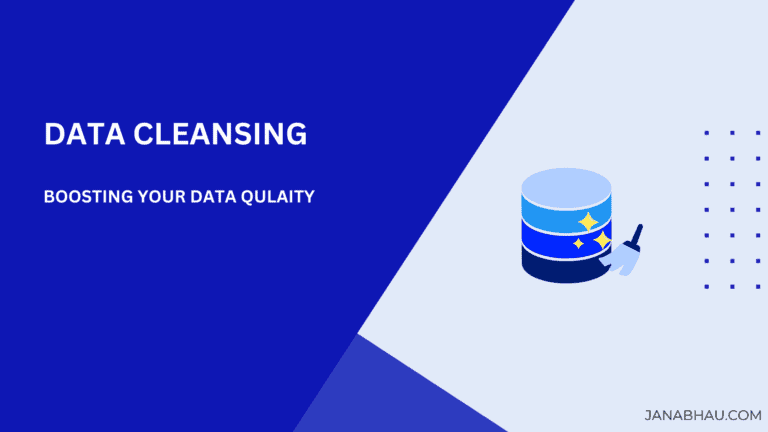

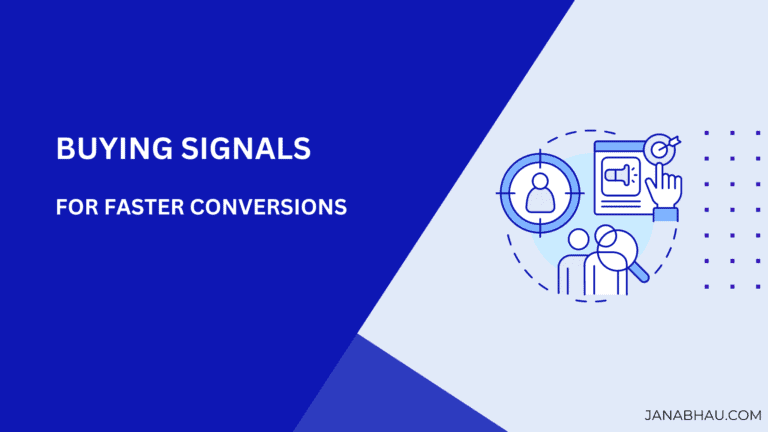
![How Data Enrichment Transforms Sales & Marketing Activities [+Best Practice]](https://janabhau.com/wp-content/uploads/2024/02/Feature-Images-5-768x432.png)
![What is Account Based Marketing? [8-Step Guide to Get Started]](https://janabhau.com/wp-content/uploads/2024/09/Featured-Images-4-768x432.png)